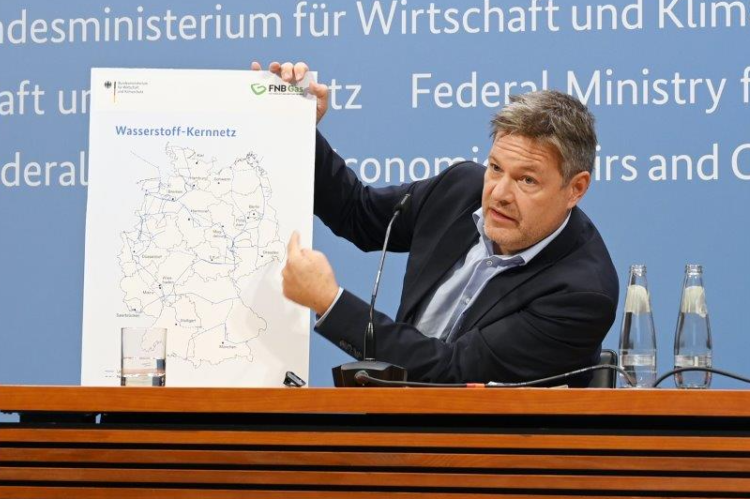Germany has decided to build a 9,000 kilometre-long hydrogen network. But why is the Bundesrepublik betting big on a still nascent industry?
Earlier this week, the German authorities announced that they had finalised a plan to construct a nationwide hydrogen pipeline network. The grid will criss-cross the country, from Düsseldorf to Dresden and from Munich to Kiel.
More than half of the network will actually be repurposed fossil gas pipes, while the rest will be newly built. The plan comes with a price tag of €19 billion and will only be fully completed in 2032. The very first hydrogen molecules will start to flow next year.
Germany’s economy minister, Robert Habeck, insisted at the launch of the “core network” plan that it makes the country “a pioneer in Europe”.
That is hard to argue with as no other nation is as far down the hydrogen rabbit hole as Germany. Whether that is for good reason or not, will remain an open question for years to come, as the merits of the fuel are fully explored.
The hydrogen strategy is all part of Germany’s plan to accelerate its decarbonisation journey. In particular it will be crucial for the Bundesrepublik’s massive industrial sectors, which in many cases will struggle to go green without the fuel.
Electrification is set to do a lot of heavy lifting in the energy transition: from the power sector to cleaning up transport. But many industrial applications can only do so much with green electrons, they require molecules.
Often this is just a question of physics. Manufacturing processes for products like virgin steel, cement and fertilisers require massively high temperatures that cannot be easily achieved with electricity alone.
Germany’s lucrative petrochemical sector is also crying out for the decarbonising potential of hydrogen. So there is demand and the hydrogen network is a way to link that with supply.
The 9,000 km-long grid will link every one of Germany’s regions, meaning ports and the renewables-rich areas of the north will be connected with the south’s industrial heartland.
Considering that hydrogen can only really decarbonise sectors when it is produced using renewable energy that is a vital element of the plan, as it means that the fuel can be produced where the wind blows and the sun shines before being shipped to where it is needed.
Port access also means that Germany can unlock a global marketplace, as there are numerous countries around the world that want to become hydrogen exporters. Australia and India, to name just a couple, might soon be shipping the fuel to Bremen and Hamburg.
Germany’s central location in Europe – it borders nine other countries – could also prove vital to hydrogen’s chances of scaling up to the level that Berlin wants it to. This strategy does provide somewhat of a powerful signal after all.
Europe’s richest country, home to its most successful industries, is putting its money where its mouth is and building the infrastructure needed to build the industry.
That is all great but does not completely answer many questions that are still open regarding hydrogen’s economic fundamentals. Germany will do its best to answer some of them in the coming years, that is clear.
Want more updates and analysis of what is happening in the world of energy and climate? Interested in finding a job in the sector or more information about public tenders? Sign up to our Energy Rundown newsletter here!

